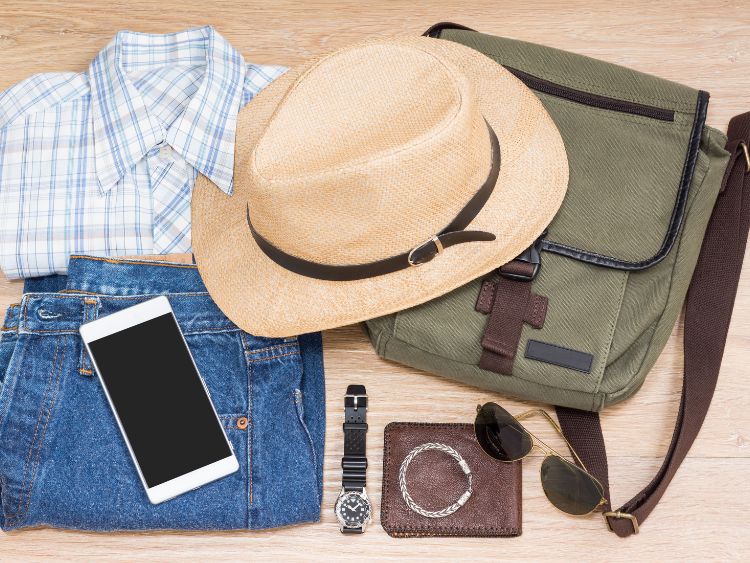The 1930s marked a pivotal decade in fashion, defined by elegance, innovation, and a shift from the flamboyant 1920s to more refined and practical styles. With the world facing the Great Depression, fashion designers had to create pieces that were both stylish and functional. The era left a significant impact on fashion that we still see today, from glamorous evening gowns to tailored suits. Let’s take a journey through the iconic looks and trends of 1930s fashion.
1. Key Fashion Trends of the 1930s
1930s fashion was all about refinement. Gone were the loose, carefree flapper dresses of the 1920s, replaced by more fitted and flattering silhouettes. Here are some key trends:
- Bias Cut Dresses: Invented by designer Madeleine Vionnet, the bias cut became a defining feature of the decade. This technique allowed fabric to drape beautifully over the body, creating an elegant, flowing silhouette.
- High Waistlines: Dresses and skirts often had high, cinched waistlines, emphasizing an hourglass figure.
- Broad Shoulders: Structured shoulders became popular, especially towards the end of the decade. This gave women a powerful, confident look.
2. Influence of Hollywood on 1930s Fashion
Hollywood had a massive impact on 1930s fashion. Movie stars like Jean Harlow and Greta Garbo set the trends, and women worldwide sought to emulate their glamorous looks. This was the age of the silver screen, where evening gowns made from silk and satin were the epitome of luxury.
- Eveningwear: Hollywood glamour influenced the popularity of evening gowns. Dresses featured intricate details like beadwork, sequins, and fur stoles, perfect for black-tie events.
- Daywear: Even casual wear was elevated by Hollywood’s influence, with women donning tailored suits, matching hats, and gloves.
3. Fabrics and Materials
During the 1930s, fabric choices reflected the changing economic conditions. Despite the Great Depression, fashion remained creative.
- Silk and Satin: These luxurious materials were used in eveningwear and intimate apparel, providing a touch of opulence during difficult times.
- Wool and Rayon: For everyday wear, wool and rayon were practical and affordable alternatives. Rayon, in particular, became a popular fabric for its silk-like appearance but lower cost.
4. Men’s Fashion in the 1930s
It wasn’t just women’s fashion that evolved during this decade. Men’s fashion also saw significant changes, with a focus on tailoring and structure.
- Double-Breasted Suits: The double-breasted suit became a wardrobe staple for men, giving them a broad-shouldered, masculine appearance.
- Fedora Hats: No gentleman was fully dressed without a fedora. This iconic hat, often made from felt, added a touch of class to any outfit.
- Casual Wear: Knitwear became more common for leisure activities, with men opting for sweaters, cardigans, and slacks for a more relaxed look.
5. Accessories that Completed the Look
No outfit was complete without the right accessories in the 1930s. Accessories played a crucial role in personalizing outfits and showcasing individual style.
- Gloves: Worn by both men and women, gloves were essential for formal events and day-to-day activities.
- Hats: From cloche hats to wide-brimmed styles, hats were a key component of 1930s fashion for women. Men, on the other hand, often wore fedoras or trilbys.
- Shoes: Women favored T-strap or Mary Jane heels, while men typically wore Oxfords or brogues.
6. The Impact of the Great Depression on Fashion
The Great Depression deeply influenced fashion trends in the 1930s. People had to be resourceful, often repurposing older clothing or using cheaper fabrics.
- Frugal Fashion: As money was tight, fashion became more about functionality than luxury. Clothing was often mended or altered to extend its life.
- Simplicity: While evening gowns remained glamorous, daywear became more practical and straightforward, with an emphasis on durability.
FAQs
- What was the most popular style of dress in the 1930s?
The bias-cut dress was one of the most popular styles, creating a sleek and elegant silhouette that flattered the body. - How did Hollywood influence 1930s fashion?
Hollywood set the trends during this era, with stars like Jean Harlow and Greta Garbo inspiring glamorous eveningwear and tailored daywear. - What materials were commonly used in 1930s fashion?
Silk, satin, wool, and rayon were popular materials. Silk and satin were often used for evening gowns, while wool and rayon were used for everyday clothing. - How did the Great Depression affect 1930s fashion?
The economic hardships of the Great Depression led to more practical and frugal fashion choices. People often repurposed clothing, and designers focused on creating functional, long-lasting garments. - What accessories were essential in 1930s fashion?
Gloves, hats, and shoes were key accessories. Women often wore cloche hats and Mary Jane heels, while men wore fedoras and Oxfords.
Conclusion:
The 1930s may have been a decade of economic hardship, but it was also a time of innovation and elegance in fashion. From Hollywood’s influence to the practical adaptations brought on by the Great Depression, 1930s fashion left an indelible mark on the world of style. Even today, we see echoes of this era in modern trends, proving that true style is timeless.



